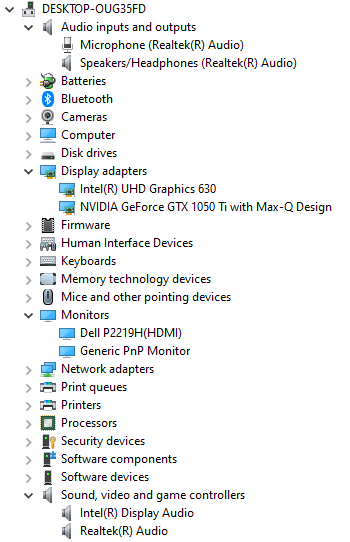My laptop is unable to project to external monitors and screens.
No error is shown - the laptop thinks that it is projecting, but the monitor receives no usable input. If I select "extend" projection, I can move my cursor off the side, onto the other page, and if I select "Second screen only", my laptop screen goes black. I am using a standard HDMI cord - I have tried with multiple HDMI cords (and multiple TVs / monitors), and I don't believe the port is the issue. I have successfully projected before, about a year ago,and had not tried again until a couple days ago, when I encountered issues.
I have tried:
- Restarting the computer and monitor.
- Changing order of computer and monitor start-up and HDMI connection. (computer on->monitor on->plug in, and every other combination possible)
- Searching for updates (by right-clicking in device manager) for monitor drivers, my display adaptor (Intel UHD 630) and graphics driver (NVIDIA GTX 1050 Ti), and all audio-related drivers I could find.
- Rolling back my display adaptor to previous driver versions.
- Uninstalling the display adaptor and graphics driver in device manager and restarting the computer to allow them to reinstall upon startup.
- Reinstalling the display adaptor downloaded from Intel's website.
- Checking the resolution of the display was correct in Settings.
I believe all relevant device manager items are shown below.
The only strange thing I noticed in Settings: Advanced display settings shows the refresh rate at 59 Hz for the external monitor I am trying to use, while the Display Adaptor Properties window, as well as packaging for this monitor, shows the refresh rate at 60 Hz (30 Hz is an option listed, but cannot be selected).
I found one other person with similar issues on this Dell forum: https://www.dell.com/community/Monitors/P2419HC-displaying-No-HDMI-signal-from-your-device/td-p/7640157. I also have a Dell laptop - I may ask that forum next, but it seems like a Windows issue by my guess.




